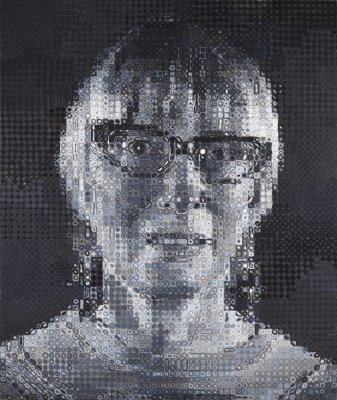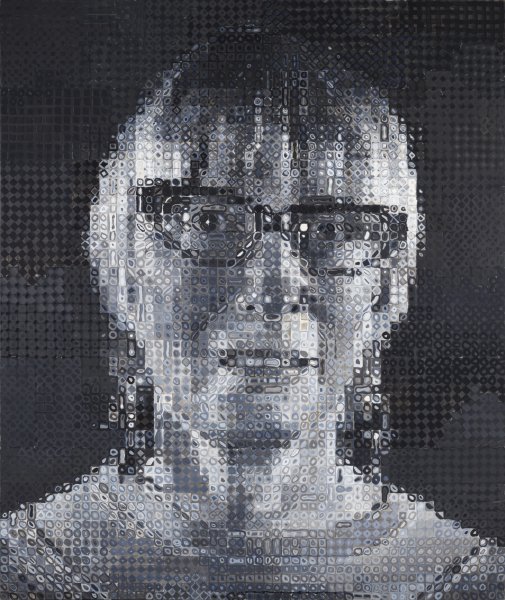Conceptual Basis
Artist Chuck Close creates large-scale portraits in a unique way. Through the use of a grid system, Close creates paintings that are composed of many squares. Like an illusion, when viewing one of these paintings close up, one sees an array of squares filled with abstract shapes and colors. Upon further observation, and when viewed from a distance, a portrait appears that is formed by these separate square compositions. Close’s mathematical approach to structuring his work, combined with his abstract flair, results in energetic portraits. This lesson—which is inspired by the different elements of Close’s portraits—reinforces the elements of shape, color, and value in creating unique self-portraits.

